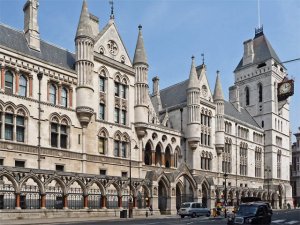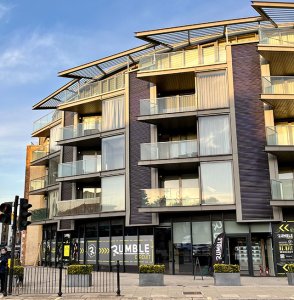Overlooking Nuisance Claims

Contact
Table of Contents
The Supreme Court’s Ruling on Overlooking as Private Nuisance
In the case Fearn v Tate (2023) UKSC 4, the UK Supreme Court ruled that overlooking can be a private nuisance if it’s “abnormal and unexpected” and causes “substantial visual interference”: The Supreme Court found that the Tate was liable for nuisance. Lord Leggatt gave the leading judgment and applying the principles applicable to private nuisance, he found that the Tate’s viewing platform causes a substantial interference with the ordinary use and enjoyment of the Flats comparing the occupant’s position to that of animals on display in a zoo. The Supreme Court however did not address the issue of remedy which was referred back to the High Court.
This case may well open up the floodgates given that it found that visual intrusion can conceptually constitute an actionable nuisance although the Supreme Court did indicate that a building simply overlooking neighbouring land or occupants looking at what is happening on neighbouring land in the “ordinary course” will not give rise to liability in nuisance. The Court considered that the circumstances in this case were extreme and not “mere overlooking”, the Tate having a viewing platform and inviting members of the public to visit and look out in every direction and this is what constituted offensive behaviour.
Lord Leggatt re-emphasised it is not a defence to say that the claimant could take reasonable steps to avoid the consequence of the nuisance for example putting up curtains. It was not reasonable to place the burden on the claimant to mitigate the impact of the special use of the property by Tate.
Implications for future private nuisance claims
The case is useful in that it restates the principles applicable to private nuisance claims:
- A private nuisance is a “tort to land” which is meant that its subject matter is wrongful interference with the claimant’s enjoyment of rights over land. The term nuisance is properly applied to such actionable user of land as interferes with the enjoyment by the claimant’s right in land. The land includes here not only the earth itself but also buildings and other things physically attached to it and rights such as easements which attach in law to land.
- There is no conceptual pr a priori limit to what can constitute a nuisance. Anything short or direct trespass on the claimant’s land which materially interferes with the claimant’s enjoyment of rights in land is capable of being a nuisance. This interference may be caused by something tangible such as Japanese knotweed or something intangible such as fumes
- The interference must be unreasonable which means that to give rise to liability an activity must unduly interfere with a person’s use and enjoyment of land.
- The interference must be substantial, and the courts will not entertain claims for minor annoyances.
- Priority would be accorded to the general and ordinary use of land over more particular and uncommon uses.
- It is no defence to a claim in nuisance that the defendant is using the land reasonably
- The principle of reciprocity explains the priority given by the law of nuisance to the common ordinary use of land over special and unusual uses. A person who puts his land to a special use cannot justify substantial interference which this causes with the ordinary use of neighbouring land by saying he is asking no more consideration or forbearance from his neighbour than they (or an average person in their position) can expect from him.
- The right to build (and demolish) structures is fundamental to the common and ordinary use of land, involving as it does the basic freedom to decide whether and how to occupy the space comprising the property. It follows that interference resulting from construction (or demolitions) works will not be actionable provided it is “conveniently done” so that in so far as all reasonable and proper steps are taken to ensure that no undue inconvenience is caused to neighbours.
- “Common and ordinary use of land” is to be judged having regard to the character of the locality.
- It is no defence to a claim for nuisance that the defendant was already using his land in the way now complained of before the claimant acquired or began to occupy the neighbouring land. Nor is it a defence that the defendant’s activity did not amount to a nuisance until the claimant’s land was built on or its use was changed.
- It is not a defence to a claim for nuisance that the activity carried on by the defendant is of public benefit.
It remains to be seen if the unusual facts of this case limit its applicability to other cases or whether these principles are explored further in future cases.
How Osbornes Law can help with private nuisance claims
Osbornes Law offer expert advice in relation to property disputes and private nuisance claims, supporting clients through every stage of the process.
To speak with one of our solicitors, contact us by:
- Filling in our online enquiry form; or
- Calling us on 020 7485 8811
Share this article
Contact Shilpa today
Call us 020 7485 8811
Email us Send us an email and we’ll get back to you
More from ShilpaVIEW ALL
- 11.5.2023
Lease Extension Negligence
What is Lease Extension Negligence? Solicitors Negligence when a Tenant claims a new lease of a flat under the Leasehold...
Read more - 5.2.2023
Japanese Knotweed: Knot in my backyard again!
Huge legal bill after selling home with Japanese knotweed Many will have read the recent case in which a furniture...
Read more - 9.6.2022
TOLATA Claims
What is a TOLATA claim? A TOLATA claim is a legal process under the Trusts of Land and Appointment of...
Read more - 6.4.2022
The End of Ground Rents
The Leasehold Reform (Ground Rent) Act 2022 It has been confirmed that The Leasehold Reform (Ground Rent) Act 2022 will come into...
Read more - 9.11.2021
Can I Still Claim Adverse Possession?
What is Adverse Possession aka Squatters’ Rights? The principle of “adverse possession” commonly known as “squatters rights” is a principle...
Read more - 5.10.2021
Buying a Property with a Party Wall Agreement
Introduction to buying a house with a party wall agreement Buying a property can already be a stressful process but...
Read more - 10.8.2021
Beneficial Interest in Property
What does beneficial interest in property mean? A beneficial interest in property gives someone the right to share the benefits...
Read more - 26.6.2021
The Risks Of Buying Properties Off Plan!
Buying Property Off Plan The Daily Mail reported that 300 families a week have to move into shoddy newly built homes....
Read more - 11.10.2019
End to No Fault Evictions
Everything you need to know about section 21 reform The government is planning to overhaul renter’s rights in the UK,...
Read more - 18.7.2019
New Builds, Poor Standards!
Allegations of Poor Standards and Customer Care in New Builds This week’s Dispatches programme examined allegations of shoddy standards,...
Read more - 10.4.2019
Tenant Fees Act 2019
Tenant Fees Act 2019 comes into effect On 12 February 2019, the Tenant Fees Bill received Royal Assent and comes into effect on...
Read more - 23.9.2018
HMO Licenses to be Extended
Changes to HMO Licenses In an attempt to raise standards for all relevant Houses in Multiple Occupation (HMOs), changes are...
Read more - 31.10.2017
Can you rent a property to then rent...
What is Airbnb rent-to-rent? Airbnb rent-to-rent is where an individual rents a property from a landlord, typically under a standard...
Read more













